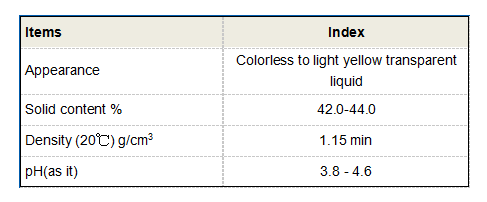polyacrylamide polymer
The Significance of Polyacrylamide Polymer in Modern Applications
Polyacrylamide, a water-soluble polymer derived from the monomer acrylamide, has found extensive applications in various fields due to its unique properties. Its ability to form gels, enhance viscosity, and serve as a flocculant positions it as a vital component in industries ranging from wastewater treatment to agriculture, biomedical applications, and even in the oil and gas sector.
Structure and Properties
The structure of polyacrylamide consists of repeating units of acrylamide, a compound that can exist in several forms anionic, cationic, and nonionic. This versatility allows polyacrylamide to exhibit different properties based on its composition. For instance, anionic polyacrylamide carries a negative charge, making it effective in binding positively charged contaminants. Conversely, cationic polyacrylamide, with its positive charge, is useful in applications such as papermaking, where it aids in flocculation processes.
One of the standout features of polyacrylamide is its high molecular weight, which can exceed several million daltons. This high molecular weight contributes to its excellent viscosity properties when dissolved in water, making it suitable for thickening and stabilizing formulations. Furthermore, its solubility in water and non-toxicity have widened its acceptance across various industries.
Applications in Wastewater Treatment
One of the most critical applications of polyacrylamide is in wastewater treatment. In this context, the polymer is used as a flocculant to help aggregate and remove suspended solids from water. When added to wastewater, polyacrylamide molecules interact with particulates, forming larger flocs that can be easily removed through sedimentation or filtration. This process not only improves water clarity but also reduces the load on subsequent treatment processes.
The effectiveness of polyacrylamide in flocculation is enhanced by its ability to bridge between particles, leading to increased sedimentation rates. Its use in municipal and industrial wastewater treatment facilities has proven to be an economically viable solution for meeting regulatory standards while maintaining operational efficiency.
polyacrylamide polymer

Role in Agriculture
Polyacrylamide is also making strides in agriculture, particularly in soil conditioning and moisture retention. When applied to soil, polyacrylamide can improve water infiltration and retention, reducing the need for frequent irrigation. This is particularly beneficial in arid regions where water scarcity is a pressing issue. By enhancing soil structure and reducing erosion, polyacrylamide contributes to sustainable farming practices, ultimately leading to better crop yields and reduced environmental impact.
Additionally, polyacrylamide supports the delivery of fertilizers and nutrients, enabling more efficient use of agricultural inputs. This targeted approach lessens runoff and minimizes ecological damage, underscoring the polymer's role in promoting environmentally friendly farming techniques.
Biomedical Applications
In the biomedical field, polyacrylamide is utilized in the creation of gels for drug delivery systems and tissue engineering. Its biocompatibility makes it suitable for developing hydrogels that can encapsulate drugs and provide controlled release, ensuring therapeutic agents are delivered over extended periods. Moreover, polyacrylamide gels are widely used in electrophoresis for the separation of biomolecules, such as proteins and nucleic acids, allowing for precise scientific analysis.
Conclusion
The diverse applications of polyacrylamide polymer highlight its significance in modern technology and environmental management. As the world faces increasing challenges related to water treatment, agricultural efficiency, and healthcare, the continued development and application of polyacrylamide will play a crucial role in addressing these issues. Its versatility, effectiveness, and safety position polyacrylamide as an indispensable tool in various sectors, paving the way for innovative solutions in the years to come. As research progresses, the potential for new applications of this remarkable polymer remains vast, promising to enhance sustainability and efficiency across multiple domains.
-
Pbtc Scale InhibitorPBTC: A Scale Protector for Industrial Water TreatmentNewsAug.05,2025
-
Organic Phosphonate: An Efficient Defender in the Field of Scale InhibitionNewsAug.05,2025
-
Hydrolyzed Polymaleic Anhydride: Green Pioneer in Scale Inhibition FieldNewsAug.05,2025
-
PAPEMP Polyamino Polyether Methylene Phosphonic Acid For SaleNewsAug.05,2025
-
Flocculant Water Treatment: A Pioneer in Purification in the Field of Water TreatmentNewsAug.05,2025
-
Benzyl Isothiazolinone: An Efficient and Broad-Spectrum Antibacterial Protective GuardNewsAug.05,2025





